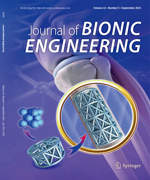This study describes the dynamic behaviour of droplets of biological liquids on hydrophobic surfaces under electrostatic actuation, to devise sample handling in lab-on-chip diagnostic tools. Bovine Serum Albumin (BSA) is taken as a representative biomolecule, since it is often used in adsorption studies. Green Fluorescence Protein (GFP) is also considered, given its natural fluorescence. Several effects such as sample concentration and pH are discussed. The results show negligible effects of proteins concentration in electrowetting, although increased concentrations endorse passive adsorption mechanisms, which alter the local wettability of the substrates precluding droplet motion. Bioinspired surfaces promote the largest spreading diameter, which is beneficial for droplet motion. However, surface roughness promotes energy dissipation limiting the receding droplet motion. Hence, the most effective approach is altering the surface chemistry. The coating is applied to a surface with a mean roughness smaller than 20 nm and does not alter significantly the topography, thus leading to the so-called smooth superhydrophobic surface. This coating also reduces passive proteins adsorption, as confirmed by Confocal Microscopy (CM), which is beneficial for droplet motion. Evaluating absorption spectra of protein solutions evidences an increase in protein concentration ascribed to droplet evaporation as confirmed by theoretical analysis and time resolved infrared visualization.

 Table of Content
Table of Content
 Table of Content
Table of Content